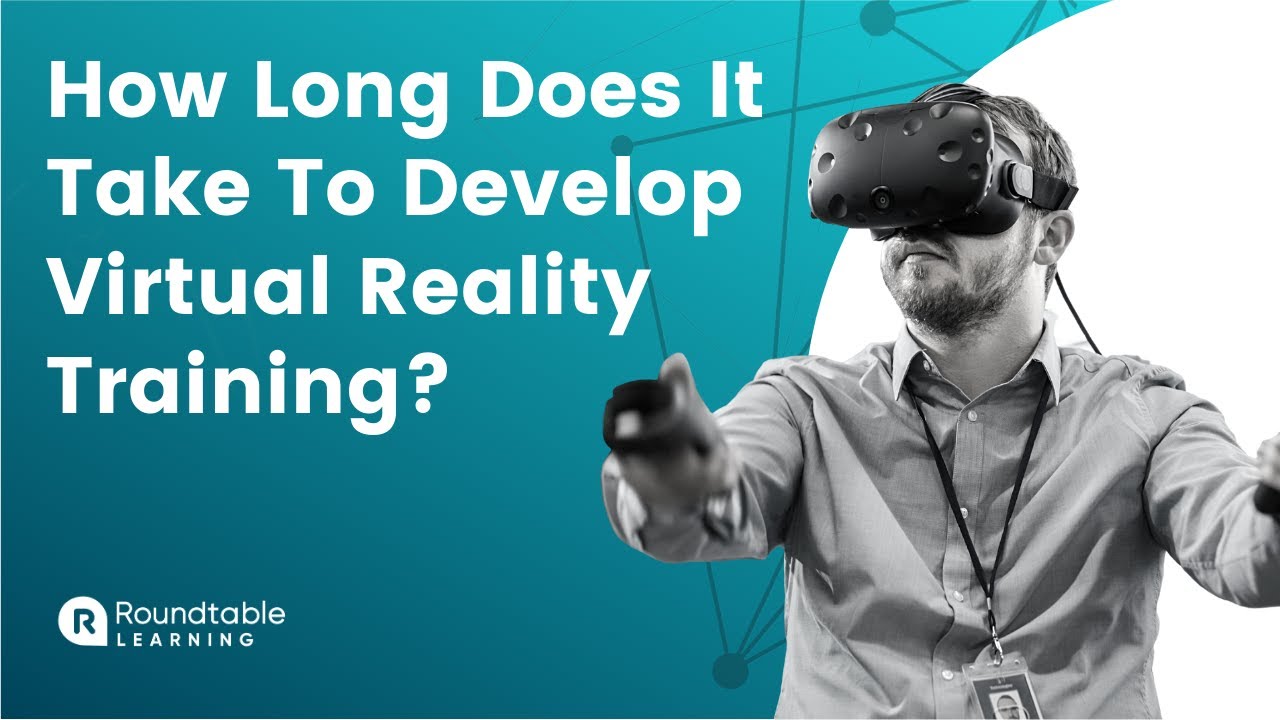In AR/VR Development
How Long Does It Take To Develop VR Training Content? - read the full article about VR development, AR/VR Development and Augmented & Virtual Reality Solutions from The Training and Development Channel on Qualified.One

Youtube Blogger

- We know that when it comes to building a new training program, a key question you may have is, "How long will it take?" And we found that estimating a development time for your new VR training program can be difficult to come by.
Thats why were here today to answer the question, how long does it take to develop VR training? (light music) Hello, my name is Steve Smole and Im an account executive here at Roundtable Learning.
One of the biggest questions we get when talking about our VR training is, "How long does development take?" While there are a lot of factors that go into this, we usually estimate that development time for a VR training program is around eight to 10 weeks.
Some projects can be completed as quickly as four weeks or take as long as six months.
In this video, were going to break down the three stages of VR training development, as well as the factors that will directly influence your project timeline.
(light music continues) While some VR activities can be a simple two-minute experience, some can be more complex, bringing on multifaceted learning options and fully immersive environments.
When looking at the timeline for VR content development, we can break down the process into three key stages, instructional design, asset creation, and then development and programming.
Lets start with the instructional design stage.
This is where we begin by defining the learning objectives, addressing business challenges, and making sure that everything we develop meets the needs of your training program.
The first stage can take anywhere from one to eight weeks or more, depending on the complexity of the subject matter, working with the experts, and the number of people needed for final sign-off.
Once the project has left the instructional design stage, its time for asset creation.
This is where graphic designers, 3D artists, and various creatives go to work and build everything that we will make in the virtual world.
Whether its 2D or 3D objects, video clips, sound effects or voiceovers, this is the stage where all the assets start to take shape.
This stage can take anywhere from four weeks to four months, depending on the project.
Now bear in mind, there are a few factors at this stage that can help expedite the process, including whether custom or stock assets are used or whether certain reference assets are available, like blueprints or CAD drawings.
The final stage is development and programming.
This stage builds a working virtual environment by fine tuning design elements and digital assets and turning them into a comprehensive VR experience.
This stage can take anywhere from one to eight weeks or more, depending upon the size of the virtual environment, number of digital assets, and the number of interactions that exist throughout the program.
Now that you know the steps, lets dive deeper into the four factors that specifically affect the development time of your VR training program.
(light music continues) Okay, so now that we know what goes into each phase of content development, we can start unpacking the factors that directly impact development time.
The four major factors that affect VR development time are flowchart and script development, model complexity, program intensity, and the level of expertise of the developers.
Lets start with flowchart and script development.
This is the time it takes to establish the training programs outline and goals, as well as the steps a learner will experience and where visual elements will be placed, which sets the groundwork for the rest of the development process.
The more complex the learning program, the more time will be needed for its script development.
The second factor is the complexity of modeling or how detailed the assets in the virtual world will be.
For example, a learning activity set outside in a park with trees and birds and fountains will take more time to develop than an activity set in a single office room with a table and a chair.
The third factor that affects VR development time is the intensity of the program.
This is when the programmers build the unique interactions that give the project shape.
For example, when a learner selects a certain option, the programmer must determine how the experience reacts.
The larger the size of the program and greater the intensity of the script writing, the longer it will take to program the VR experience.
The last factor is the level of expertise of your developers.
Here are just a handful of the people involved in the development.
The more experienced the people in these roles, the faster content can be developed.
This is a great reason to find an experienced partner that can bring the expertise, tools, and experience to your VR training project.
Whether youre considering adopting a VR training program or have already started planning and redesigning your content, this should help clarify what goes into a VR training program and why the average development time is eight to 10 weeks or more.
You can read more about VR training development timelines on our website, and if you want to learn more about getting started with VR training, check out our "7 Step Guide to Creating Your First VR Training Program." The links are in the description below.
If you have any questions, reach out to us at any time and make sure to like and subscribe for all things training and development.
(light music continues)
The Training and Development Channel: How Long Does It Take To Develop VR Training Content? - AR/VR Development

